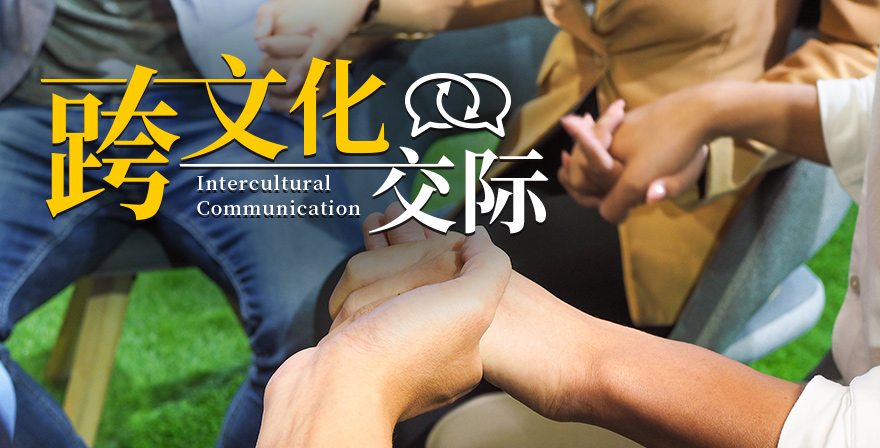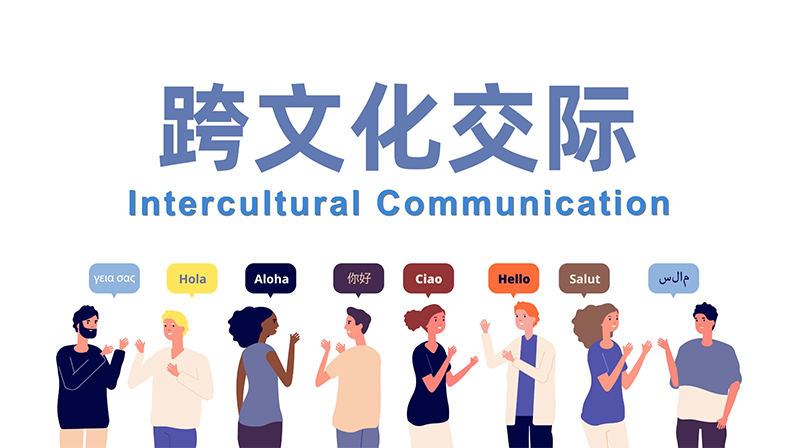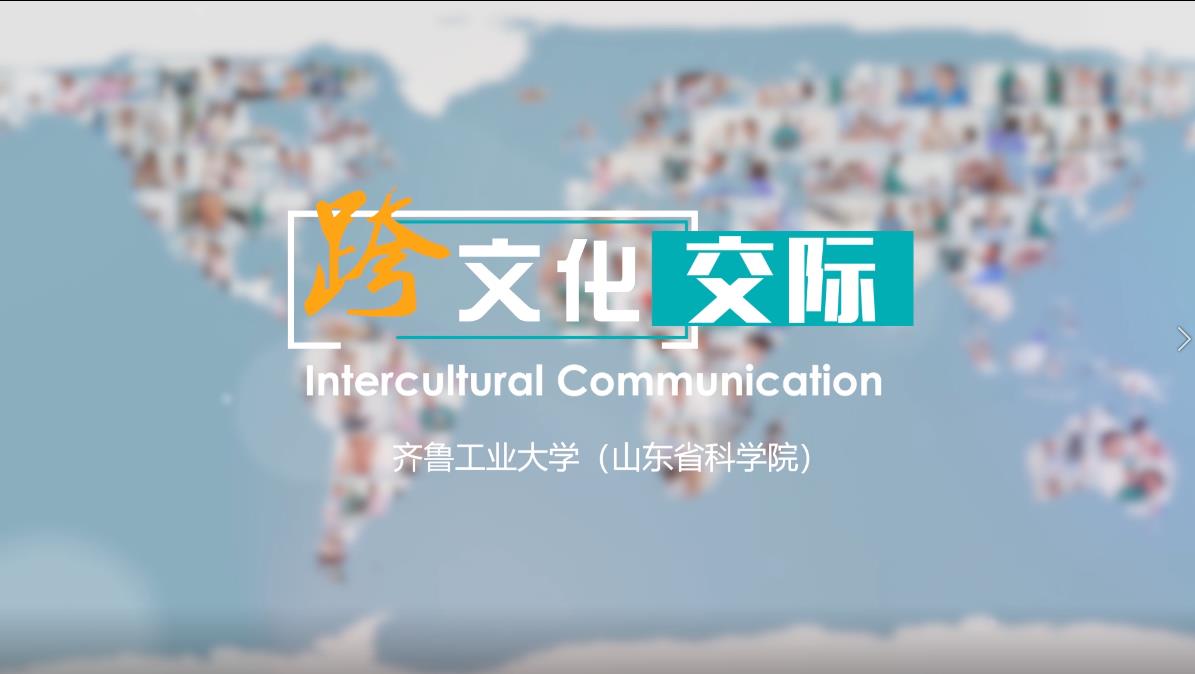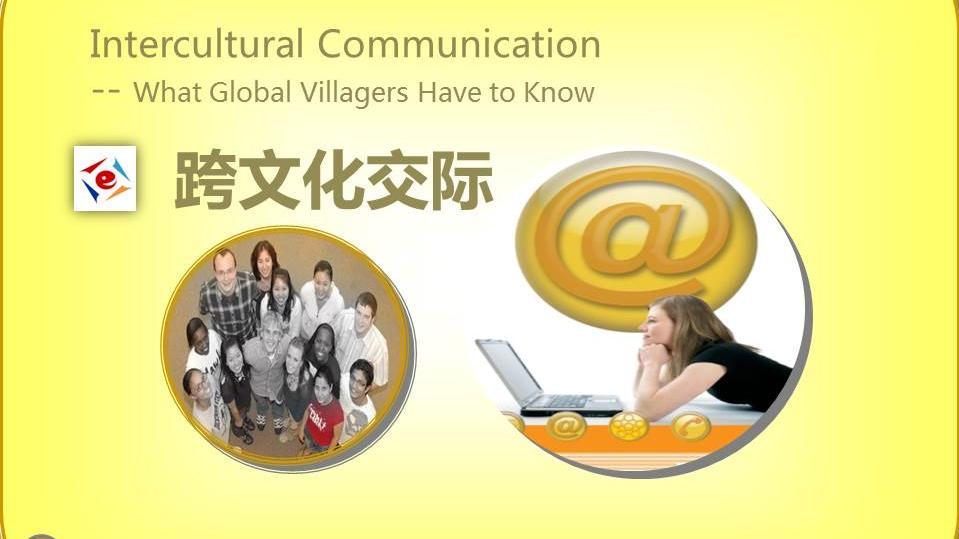- When we apologize to others, we are performing speech acts. ( )
- In China, people’s attitude towards animals is mainly negative, while in the west, it is mainly positive. ( )
- Carley Dodd defines culture as the holistic interrelationship of a group's ( ), beliefs, rules, customs, communication patterns, and institutions.
- Women are expected to play the nurturing and caring role in femininity cultures. ( )
- Human nature is what all human beings have in common. ( )
- In high-context cultures, ( ) are appreciated as the way to deliver messages.
- What does intercultural communication focus on when people from different cultural and linguistic backgrounds that interact with each other ( )?
- People in low-power-distance cultures all have a rightful place, clearly marked by countless vertical arrangements. ( )
- If a visit is a “business” rather than a social one, the visitor is not supposed to arrange a time in advance. ( )
- In Politeness theory, negative face is an individual’s desire to be liked and appreciated by others. ( )
- In intercultural communication, having more than one view could provide us new angles to overcome culture shock. ( )
- Chinese people regard dragons as noble and auspicious omens and called themselves “the descendants of dragons”. ( )
- In Chinese and Western cultures, all colors bare the same meaning. ( )
- Edward Hal classified all cultures into 2 categories, the high-context cultures and the low-context cultures. ( )
- Cultures are all-inclusive and very different among various societies. ( )
- As for the person named 李光明, “李” is his given name. ( )
- In collectivist cultures, individual initiative and achievement and individual decision making are not stressed or valued at all. ( )
- People with Stereotypes assume that all members of a group have exactly the same traits, and fails to specify individual characteristics. ( )
- Competency in a foreign language is tantamount to effective and successful intercultural communication in the culture that speaks that language. ( )
- High power distance cultures minimize individual differences in age, sex, status, and roles. ( )
- “端茶送客” is a very important etiquette for parting in ancient China. ( )
- Goffman (1955) defines face as “the positive public image [we] seek to establish in social interactions”. ( )
- The Chinese practice is always to use “公” or “母” to show whether a creature is male or female. ( )
- Everyone uses nonverbal communication all the time whether they know it or not. ( )
- In Western culture, it is common to indulge in a couple of minutes’ small talk, while preparing to leaving. ( )
- Which continents did the Silk Road involve? ( )
- About Sapir-Whorf hypothesis, which statement is true? ( )
- The Face Negotiation Theory is proposed by ( )
- Under event time, scheduling is determined by ( ).
- ____ are the core of the culture, but are difficult to observe and to know, even in one’s own culture. ( )
- The term “Intercultural Communication” was first developed by ( ).
- Geert Hofstede famously defined culture as the ( ) of the mind.
- Which country belongs to low-power-distance culture? ( )
- Which country belongs to individualist culture. ( )
- What’s the political phenomenon of globalization? ( )
- Find out the families of one of the following countries which are extended families. ( )
- Why did Chinese emperors wear dragon robes? ( ).
- Which color does Chinese and Westerners have the common symbol? ( )
- Which of the following statement is not correct? ( )
- Because of Man’s Fall and the Original Sin, humans are more inclined to do evil over good in the West. ( )
- The paradox of face is proposed by ( ).
- When a man crossed an arm over the other, it demonstrates and ( ).
- Implicit expression of culture can include ( )?
- What can family give to its members in its general sense? ( )
- In Asian countries, personal comfort is more important than group interest. ( )
- The Kluckhohn-Strodtbeck Value Orientations theory represents one of the earliest efforts to develop a cross-cultural theory of values. ( )
- When people merge into a new culture, they need to understand and respect the habits, customs, foods, and characteristics of the people in the that culture. ( )
- The high power-distance cultures show great respect to the fact of unbalanced power distribution. ( )
- Changes in certain aspects of a culture, especially in the area of behaviors and customs, tend to be much slower. ( )
- When people having culture shock, it becomes difficult for them to live or work. ( )
- China, Italy, and Ireland are all femininity cultures. ( )
- People in the low-uncertainty-avoidance-cultures tend to be politically disengaged. ( )
- Symbols are important because symbols allow culture to be transmitted easily. ( )
- The four stages of Oberg always occur in the same order. ( )
- Hofstede developed the so-called “Cultural Onion”. ( )
- America belongs to masculinity culture. ( )
- Trompenaars and Hampden-Turner said, ( ) determine the meaning of "good" and "bad," and are thus related to the ideas shared by a group.
- Which country belongs to low-uncertainty-avoidance culture? ( )
- The most important function of the family in any culture is ( ).
- Which attitude is not American's towards silence ( ).
- Cultures with masculine traits are named masculinity cultures, and the traits include ( ).
- Discrimination refers to the behavioral manifestations of that prejudice. ( )
- In femininity cultures, gender roles are more fluid than in masculine societies. ( )
- What are possible reasons for the different usage of animal words between China and the west? ( )
- The high power-distance cultures normally include ( ) in their society.
- People in high-context cultures say “thank you” more frequently than those in low-context cultures. ( )
- Some people may be stuck in culture shock and could not overcome it. ( )
- What are the merits of nuclear families? ( )
- In China, Japan and Thailand, there is a perception that nature is part of life and not a hostile force waiting to be subdued. ( )
- People of low-uncertainty-avoidance cultures tolerate ( ).
- In collective societies, people have their respective identities based on the social system. ( )
- People in the low-uncertainty-avoidance-cultures have fewer governing structures than those in the high-uncertainty-avoidance-cultures. ( )
- Many U.S. Americans, in thought or action, tend to have a short-term, forward-looking perspective because they value present-orientated culture. ( )
- Korean tend to use indirect, non-confrontational and vague language when they talk. ( )
- Children in high-uncertainty-avoidance-cultures are taught in a less-structured, open-ended way. ( )
- When others’ views are different from ours, mostly we are all inclined to our own. ( )
- The personality of an individual is inherited within our genes. ( )
- Beliefs that distinguish self from in-group are important in individualist cultures. ( )
- Face and facework are influenced by cultural values and vary across cultures. ( )
- In Trompenaars and Hampden-Turner’s three layers of culture, the core layer consists of the norms and values of an individual group. ( )
- A mindful person could actively attend to changed signals. ( )
- We have our sense of cultural identity, so at the beginning of intercultural communication it is difficult to go with the flow and fit into a new environment. ( )
- People who grow in extended families stand in a better position in terms of socializing with others. ( )
- Edward Hall believes meaning and context are inextricably bound up with each other. ( )
- When people communicate, sometimes they may encounter with a culturally different person endowed with different perceptions, values, beliefs. ( )
- Edward Hall’s definition of culture tells the interaction between culture and communication. ( )
- Individualism vs. collectivism dimension was proposed by Geert Hofstede as one of the four cultural dimensions. ( )
- The formation of our cultural identity could not be the cause of bias directed against people of other cultures. ( )
- Linguist and anthropologist Edward Sapir and his student Benjamin Whorf told us how our society’s language influences its culture. ( )
- Culture is constantly changing and evolving from the impact of events and as a result of contact with other cultures. ( )
- Which layer are values and norms in Trompenaars and Hampden-Turner’s cultural model? ( )
- The young individual who has lived isolated from human contact from a very young age is called ( ).
- Which country belongs to femininity culture? ( )
- An idiom contains at least ( ) words.
- Which of the following animals is the symbol of Jesus in The Bible?( )
- Who came up with the onion culture model? ( )
- Which of the following options means “鹦鹉学舌”? ( )
- In China, which of the following situation is common? ( )
- —— ( ), Rome was not built in a day. —— So you mean that it was not built at night?
- In American culture, ____ is the hallmark of most families. ( )
- Strictly speaking, idioms are expressions that are ______ to understand from their literal meaning of individual elements. ( )
- Which country belongs to low-context culture? ( )
- Who developed the iceberg analogy of culture. ( )
- When overcoming culture shock, people should not ( ).
- Who wrote “No man is an island entire of itself; / every man is a piece of the continent, / a part of the main”? ( )
- In Trompenaars and Hampden-Turner's opinion, ( ) are described as the mutual sense a group has of what is "right" and "wrong".
- The idiom “consider the possible consequences carefully before taking action” can prove that ( ).
- The sentence "Culture is our software" was said by ( )
- Which of the following notion is concerned with the correct way to treat one's parents and grandparents? ( )
- When overcoming culture shock, people should ( ).
- Examples of stereotypes include ( ).
- The instruction of cultural identity in intercultural communication become a necessity in our era. ( )
- In instruction of Cultural identity, it is important to ( ).
- Due to cultural identity, people consciously identify themselves within a group that has a shared system of ( ).
- Any sort of mental or physical distress experienced in a foreign location could be a symptom of culture shock. ( )
- People suffering culture shock may experience ( ).
- Masculinity is the extent to which the dominant values in society are _______ oriented. ( )
- Prejudice refers to negative attitudes towards other people that are derived from the faulty and inflexible stereotypes. ( )
- Oberg K distinguishes four stages of culture shock: honeymoon, crisis, recovery, adjustment. ( )
- Self-validation theory is when a participant’s posture has a significant effect on his or her self-evaluation of their emotions. ( )
- Which one belongs to typical M-time cultures ( )?
- In a low-context culture, the mode of communication is often ( ).
- Personal distance would take place when we are having conversations with ( ).
- What are three time orientations ( )?
- About addressing, which of the following statements is correct? ( )
- People from different cultures have the same visiting customs. ( )
- Westerners are reluctant to make appointments in advance. ( )
- Which of the following statement is not true? ( )
- When Chinese visit foreigners, they probably refuse the host’s tea many times out of politeness. ( )
- Which of the following is more appropriate for Westerners to use as a parting word? ( )
- In Chinese, there are two kinds of relatives that affect kinship terms. They are( ).
- Taboo and euphemism are cultural phenomena formed under specific society customs and cultural values. ( )
- The purpose of learning animal metaphors is only to study language. ( )
- People in the West usually associate fat with ( ).
- According to Brown and Levinson, cooperation is needed between speakers during social interaction. ( )
- When we admit and apologize for our shortcomings, we commit ( ).
- ( ) is not the characteristics of idiom.
- To avoid self-esteem hurt, when depicting a man, in Chinese, we say “其貌不扬, 长相一般", and in English which following words can be received? ( )
- Among the following methods, which cannot be applied to when specific taboos and euphemisms are not clear? ( )
- An idiom is a phrase that seems to make sense when you first read it, but which has a totally different meaning that you cannot guess just from looking at the words. ( )
- A proverb is an old saying which usually gives advice--- you can understand the meaning of thephrase and decide what advice it gives. ( )
- Which color represents “permission” in both Chinese and western countries? ( )
- In western countries, the followings that can be expressed by the colour white are ( ).
- The differences between two cultures are reflected perfectly in their languages. ( )
- In which dynasties was the owls regarded as sacred birds? ( )
- About the relationship between culture and language, which of the statement is not true? ( )
- Which of the following expressions are some derogatory phrases related to "bat" ( ).
- Which of the following expressions can well reflect the purpose of language? ( )
- When it comes to the colour yellow, which one is correct in the following statements? ( )
- The Chinese believe that blue has erotic connotations. ( )
- Every word in all languages has an exact one-to-one translation in a foreign language. ( )
- The high-power-distance cultures are normally affiliated with high-context cultures and collectivist cultures. ( )
- In low-power-distance cultures, the people in power often try to look less powerful than they really are. ( )
- In masculinity cultures, people believe family comes before work. ( )
- People are more informal and more direct in the high-power-distance cultures than those in the low-power-distance cultures. ( )
- Greet surveyed the workers in ______, got extensive statistics, made carefully analysis on cultural values, and formed the scale of four value dimensions. ( )
- China belongs to collectivist culture. ( )
- People of low-context cultures are very homogeneous concerning experiences, information networks. ( )
- Individualism is originated from the nuclear family structure, including parents and their immediate members, with the order of ______ among the members. ( )
- Cultures with feminine traits are named femininity cultures, and the traits include ( ).
- In “I” culture, ______ are important. ( )
- The low-power-distance cultures are characterized by ______. ( )
- The high-uncertainty-avoidance-cultures hold “what is different, is curious”. ( )
- Power distance means “to what extent a culture group adapts to _______ of power distribution in relationship and organization within a country.” ( )
- People of high uncertainty avoidance cultures prefer______.( )
- One theory of basic human values which has been very influential is that of Kluckhohn and Strodtbeck (1961). ( )
- Any communication is a risk to face. ( )
- Individuals with a “past-present” focus have a short-term view of time, whereas individuals with a “future” focus have a long- to medium-term view of time. ( )
- Facework is defined as "a set of coordinated practices in which communicators build, maintain, protect, or threaten personal dignity, honor, and respect". ( )
- In low-context cultures, ______ and ______ are needed in communication. ( )
- In China, "Unity of heaven and man" is a Chinese philosophical thought, which is expounded by Confucianism, Taoism and Buddhism. ( )
- A high-context communication is one in which most of the information is either in the physical context or internalized in the person, while _______ is in the coded explicit part of the message. ( )
- Involvement is shown by such discourse strategies as ( ).
- Contemporary Chinese scholar Pei-Jung Fu echoes this belief that human nature is originally good when he writes, “there is solid foundation for claiming that Confucius regarded human nature as tending toward goodness.” ( )
- People in the doing-oriented culture stress release, indulgence of existing desires, and working for the moment. ( )
- Which of the following statements shows how Westerners view old people? ( )
- For a number of reasons, most Americans have a rather positive perception of the elderly. ( )
- How do many eastern cultures view older people? ( )
- Which one is the first institution to introduce the child to the notion of age grouping? ( )
- In countries like ______, elders are traditionally treated with enormous respect and dignity while the young are cherished and nurtured. ( )
- According to Hofstede’s cultural onion, the innermost layer refers to ( )?
- "It's time to find ways to bring back the big tables" is cited from David Brooks's famous article( ).
- The family is one of the “instructors” who transmit the important elements of culture from generation to generation. ( )
- American culture is a very masculine culture. ( )
- Nuclear family is the most typical pattern in most Eastern cultures. ( )
- Why the U.S., people are reluctant to wear a mask? ( )
- Which of the following corresponding relationship is correct? ( )
- What are the demerits of extended families? ( )
- Find out the families of the following countries which are nuclear families? ( )
- What the iceberg model of culture teaches us is that we cannot judge a new culture based only on what we see when we first enter it. ( )
- The sources of one’s mental programs lie within the social environments in which one grew up and collected one's life experiences. ( )
- There are major differences between conscious and unconscious cultures. ( )
- The three levels of uniqueness in mental programming includes ( )
- Which of the following are the types of things we find above the surface ( ).
- Myths provide us with a link to the deepest depths of the iceberg because ( ).
- In the onion model of culture, symbols are ( ).
- Carley. H. Dodd's Model has ( ) layers.
- A person’s behavior is only pre-determined by his or her mental programs. ( )
- The Bates and Plog definition indicates that culture has distinct boundaries and it includes most of the major territory of culture. ( )
- Which of the following is not the characteristic of communication? ( )
- At times, it is easy to distinguish between informal and formal learning. ( )
- Intercultural communication is primarily a nonverbal act between people. ( )
- The expression of intimacy, power, and status among communicators is typically accomplished nonverbally through some non-verbal means, which do not include( ).
- Which of the following are intangible elements of culture ( ).
- During intercultural communication, the message sent is not the message received. ( )
- Verbal communication can be defined as communicating your thoughts through words orally, not in written form. ( )
- When you visit another country for the first time, you'll notice a lot of differences in ( ).
- In the following statements about "The Onion Model of Culture", which one is correct? ( )
- The symbols we use in communication are ( ).
- Trade along the Silk Road reached its zenith during the period of ___________. ( )
- Intercultural communication as a discipline has a long history. ( )
- Which of the following events can be considered important and notable ones in the history of intercultural communications? ( )
- What phenomena does globalization involve? ( )
- The Silk Road is perhaps the most well-known early example of globalization. ( )
答案:对
答案:错
答案:values###identity###rules###activities
答案:对
答案:对
答案:time###Body gestures###silence###space
答案:nonverbal behaviors###verbal behaviors###perceptions###attitudes
答案:错
答案:错
答案:错
答案:对
温馨提示支付 ¥5.00 元后可查看付费内容,请先翻页预览!







